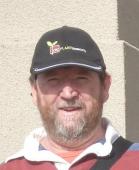light brown apple moth
Modeling the sterile insect technique for suppression of light brown apple moth (Lepidoptera: Tortricidae)
| Publication Type | Journal Article | |
| Year of Publication | 2011 | |
| Authors | Kean, J.; Stringer, M.S.L.; Woods, B. | |
| Journal Title | Journal of Economic Entomology |
Revision of the Genus Epiphyas - the light-brown apple moth in context (short version)
| Publication Type | Presentation | |
| Year of Publication | 2008 | |
| Authors | Hitchcock, B. | |
| Meeting Name | National Postgraduate Training Workshop | |
| Meeting Start Date | July 2008 |
Revision of the Genus Epiphyas - the light-brown apple moth in context (WA focus)
| Publication Type | Presentation | |
| Year of Publication | 2008 | |
| Authors | Hitchcock, B. | |
| Meeting Name | Meet the Scientist - Neale Junction Nature Reserve Expedition | |
| Meeting Start Date | 4 October 2008 | |
| Meeting Location | Dunnart Camp, Neale Junction Nature Reserve |
As part of phase two of our Insect Eradication project this research further refines the recommended techniques used against moth pests culminating in field verification trials against Light Brown Apple Moth (LBAM) in urban and orchard areas.
The aim of the project was to investigate the integration of innovative eradication technologies against LBAM as a model for the development of eradication strategies against other exotic moth pests. The main objective was the integration of the sterile insect technique and mating disruption using novel pheromone distribution technologies such as mobile mating disruption and SPLATTM (Specialized Pheromone and Lure Application Technology) in urban areas and vineyards.
Research outcomes:
Identification of irradiation dose for SIT, development and testing of mobile mating disruption, development and testing of SPLATTM in SA, NZ and WA, testing of integrated eradication in the field (SPLATTM + insecticide) and urban environment (SPLATTM +SIT), analysis of past eradications in Australia.
Transfer of technologies such as SPLATTM for eradication of pests from other insect orders needs to be investigated. Improvement in eradication efficiency through the development of mechanised application technology and improved formulation is highly likely with further input. Further research is required to develop softer eradication technologies for use in urban areas that can be integrated with pheromones.
Research implications:
New pheromone delivery technologies such as SPLATTM have the potential to become an important component of integrated eradication strategies in the future.
Acknowledgements:
The support of Jane Moran and David Eagling for Phase 1 and Phase 2 of the project is acknowledged.
PROJECT LEADER

Mr Bill Woods
Project Leader CRC40136: Insect Eradication (Phase two)
bwoods@agric.wa.gov.au
Phone: 08 9368 3962
Fax: 08 9368 3195
Read More
PROJECT DETAILS
Complete
Term
April 2009 – April 2012
Budget
$1.1 million (cash and in-kind support)
PROGRAM DETAILS
LOCATION
CORE CRC PARTICIPANTS
CONTRIBUTORS
Eradication of arthropod harmful plant pest incursions has often relied on destructive technologies such as crop removal and broad spectrum pesticide application. This strategy incurs a significant cost to industry, the environment and the community. Alternative eradication strategies that reduce the economic and social impact need to be developed.
Research outcomes
Eradication technologies were reviewed including, documenting irradiation biology and inherited sterility of Light Brown Apple moth. The competiveness of sterile moths was tested and the integration of eradication technologies was also investigated.
Research implications
Sterile insect technique has an important role as a key part of new age eradication technologies but integration with pheromones and other eradication tools needs further study. which will be conducted in phase two of this project CRC40136: Insect Eradication.
Project team
Max Suckling, Greg Baker, David Williams, Lloyd Stringer, Ian Lacey, Vanessa Mitchell, Alven Soopaya, Amandip Kaur.
Acknowledgements
David Eagling’s contribution as research leader is gratefully acknowledged.
PROJECT LEADER

Mr Bill Woods
Project Leader CRC40024: Insect Eradication (phase one)
bwoods@agric.wa.gov.au
Phone: 08 9368 3962
Fax: 08 9368 3195
Read More
PROJECT DETAILS
Complete
Term
December 2006 – December 2009
Budget
$549,000 (cash and in-kind support)




